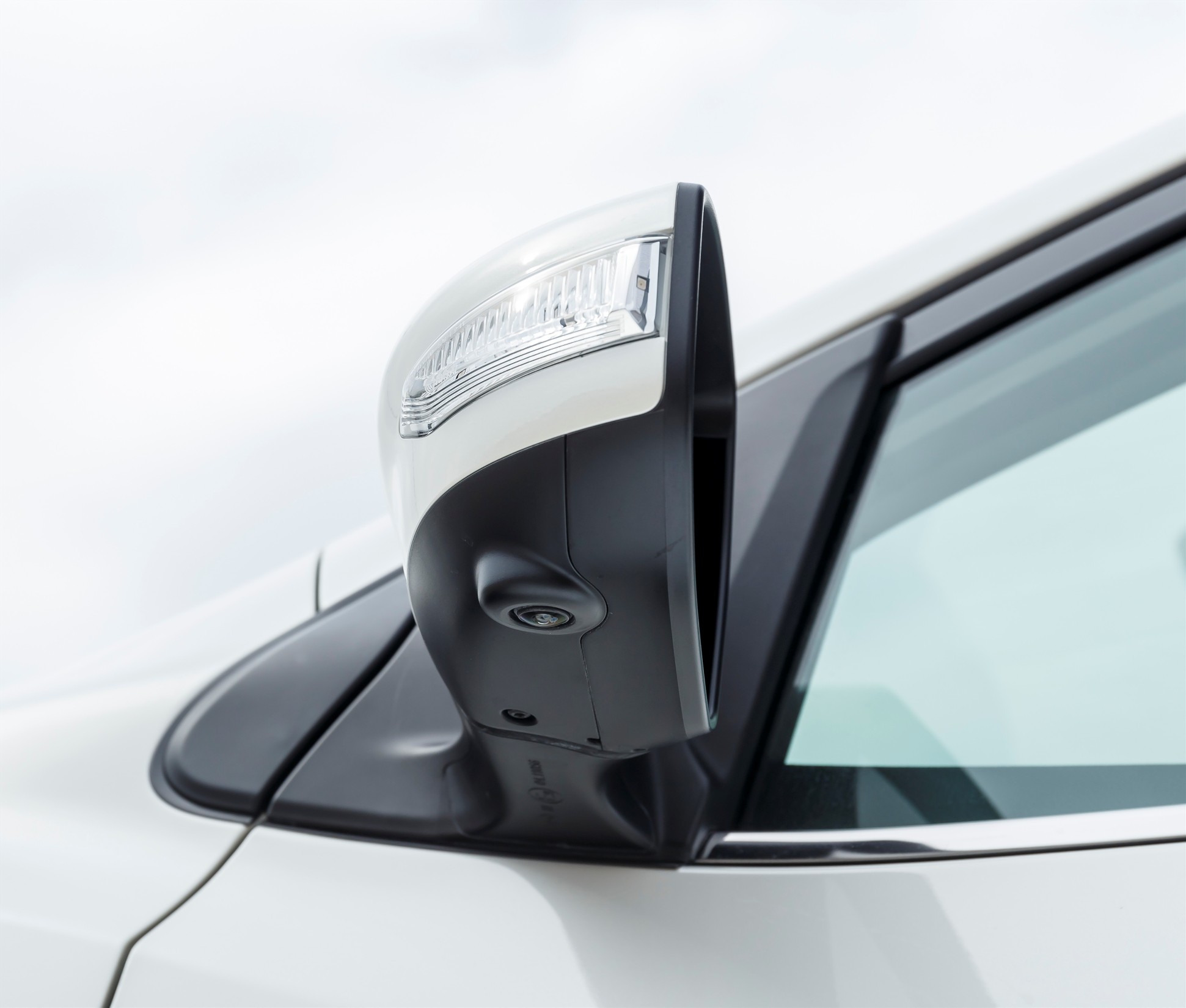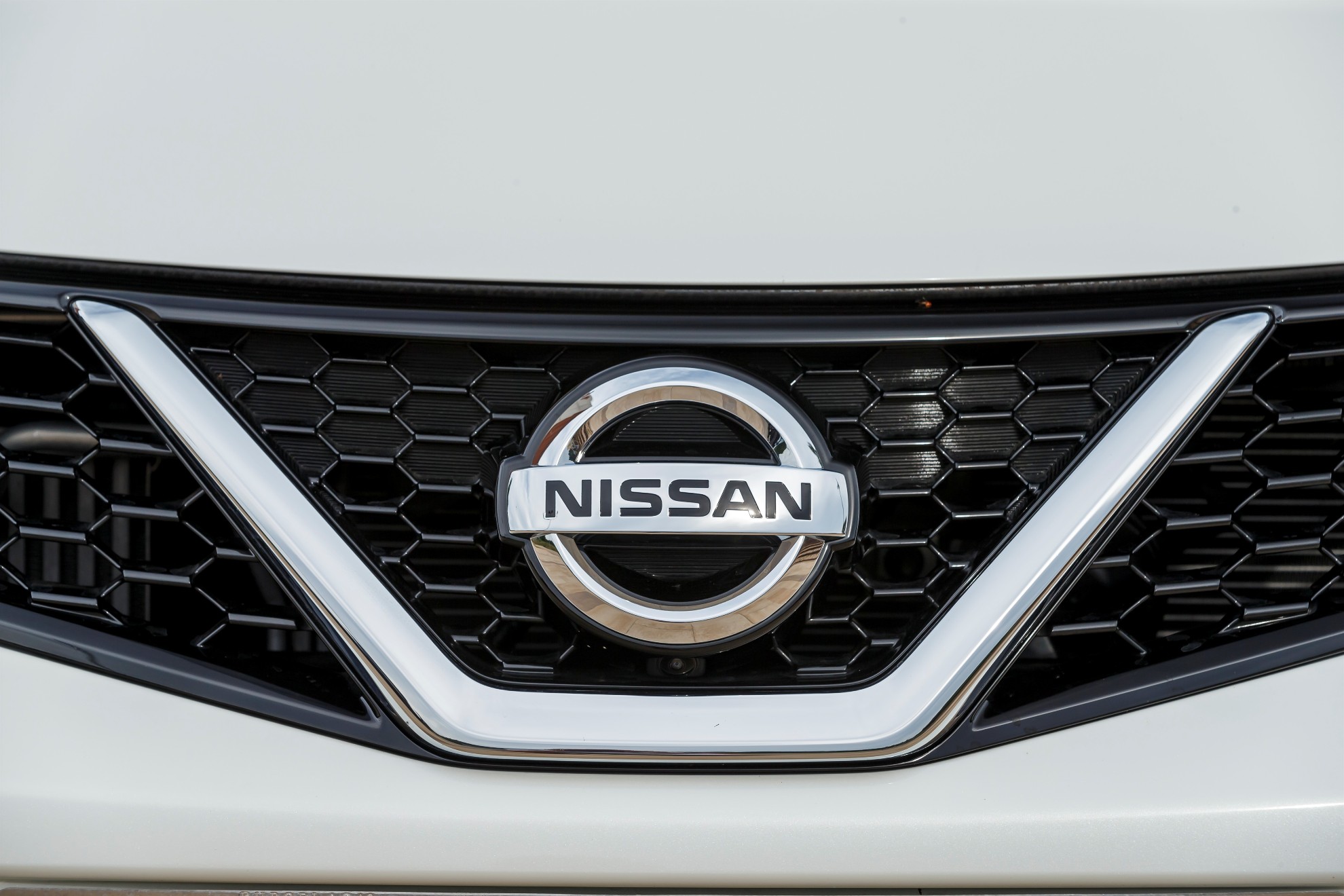The new Nissan Pulsar is packed with a range of technologies designed to make the ride feel more confident. These include Nissan’s acclaimed Safety Shield system with Moving Object Detection, Lane Departure Warning and Blind Spot Warning. Nissan’s Around View Monitor brings more advanced technology to the sector.
The Around View Monitor (AVM)
At the heart of the new Pulsar’s technology package is Nissan’s Around View Monitor. This innovation provides the platform for a number of the Pulsar’s safety, visibility and convenience features.
Combining image feeds from tiny cameras mounted on the front grille, tailgate and both door mirrors, the system projects an overhead 360 degree ‘bird’s eye view’ of the area around the Pulsar onto the 5.8-inch Connect satellite navigation and infotainment screen. The system uses complex image processing software to generate the overhead image, and gives the impression that the camera is positioned directly above the Pulsar.
The overhead view gives the driver a clear indication of obstacles around the car, helping the driver to confirm the Pulsar’s position in relation to the surrounding area and making manoeuvres safer.
The AVM switches on automatically when the vehicle is placed in reverse gear. It can also be activated at speeds of up to 10 km/h by pressing the “camera” button on the dashboard.
The system can also display the video feed from a specific camera, and can operate as a simple reversing camera that incorporates dynamic guidance on the screen to steer the driver to the correct path and into the chosen parking spot.
The Nissan Safety Shield
With its network of safety features, the Nissan Safety Shield provides Pulsar drivers with the following technologies:
Moving Object Detection
This innovation builds on the capabilities of Around View Monitor, and gives the driver a ‘digital co-pilot’ to help him look at what might be approaching the path of his reversing Pulsar.
Although most conventional parking aids warn the driver of an object in their way, Moving Object Detection gives an audible and visual alert if someone or something is moving behind the car – for example if a child is walking towards your reversing Pulsar.
Mounted on the tailgate and featuring a convex lens, the rear wide view Around View Monitor camera has a sweep of vision in excess of 180 degrees, giving it an unparalleled field of vision at the back of the car. Images from the camera are displayed on the 5.8-inch NissanConnect screen.
Further to using the multi-functional rear camera, Moving Object Detection can also read additional data from the Around View Monitor’s side and front cameras. This allows the system to build a complete 360 degree picture capable of detecting hidden moving objects on sides or in front of the vehicle.
Systems offered with Nissan Safety Shield are only truly useful if they work in harmony with the driver and so, it is why drivers wishing to personalize the settings of the Nissan Safety Shield can do so either through a dashboard mounted button or through the Connect system. The dashboard switch offers an ‘all-on’ or ‘all-off’ convenience function. However if, for example, the driver wants to switch off only the Lane Departure Warning function, this too can be done, via a touch screen menu. Any settings customized by the driver through the NissanConnect menu are then remembered by the system for future journeys.
Blind Spot Warning
Nissan’s Blind Spot Warning system uses the rear wide-view Around View Monitor camera to detect vehicles in the hidden blind spot area, on both sides of the Pulsar. If a vehicle is detected in either blind spot, a discreet warning light illuminates in the A-pillar on the driver’s side. If the driver indicates to change lanes and the system detects a vehicle in the danger area, the light flashes and an audible warning is given.
Lane Departure Warning
Lane Departure Warning detects if the Pulsar is starting to drift out of lane. While you might expect a windscreen mounted camera or radar system to be required for this function, the Pulsar uses only its rear wide view AVM camera. Advanced computer programming detects even faint road markings allowing the car to determine if it is drifting out of position without indicating. If it does, a warning is given to the driver to correct their road position. The system automatically adjusts its sensitivity when on rural roads to allow for the different required driving style.
Self-cleaning camera
An essential component in the Pulsar’s Safety Shield and Around View Monitor is a small rear-facing camera located on the tailgate. Although parking cameras are nothing new to Nissan – the 2002 Primera was the first car to introduce the technology to its sector – the Pulsar’s device has a few innovations to mention. As three of the Pulsar’s Safety Shield systems (Moving Object Detection, Lane Departure Warning and Blind Spot Warning) rely on accurate information to be delivered by the camera, the lens must be kept spotlessly clean at all times.
To address the problem of a dirty lens, the Pulsar features a ‘wash and blow dry’ system that is fully automatic.
Using advanced image processing software that can process nearly 15 million pixels per second, the system detects when the lens is obscured and sends a jet of water to wash away the dirt. To eliminate the problem of the wet lens attracting more dirt, a shot of compressed air is fired over its surface. This dries the lens and ensures that the cameras can continue to display clear images on screen. The system automatically determines the best cleaning method, for example only using a jet of air to remove a speck of dust or a drip of water to clear rain drops. This means that water and energy isn’t wasted, keeping the reservoir fuller for longer.
Forward Emergency Braking
This system can automatically apply the Pulsar’s brakes if it detects that an impact is inevitable.
By scanning the road ahead using radar system integrated into the lower element of the front bumper, the Forward Emergency Braking system delivers three levels of assistance. First is an audible warning, alerting the driver if the gap to the car in front is closing. Second, if the driver does not react, the brakes are automatically partially applied. Finally if the gap is still closing, the brakes will be applied harder if necessary. The system has been designed and engineered to avoid accidents completely but at minimum, works to reduce the severity of impending harm.
Source: Nissan




















